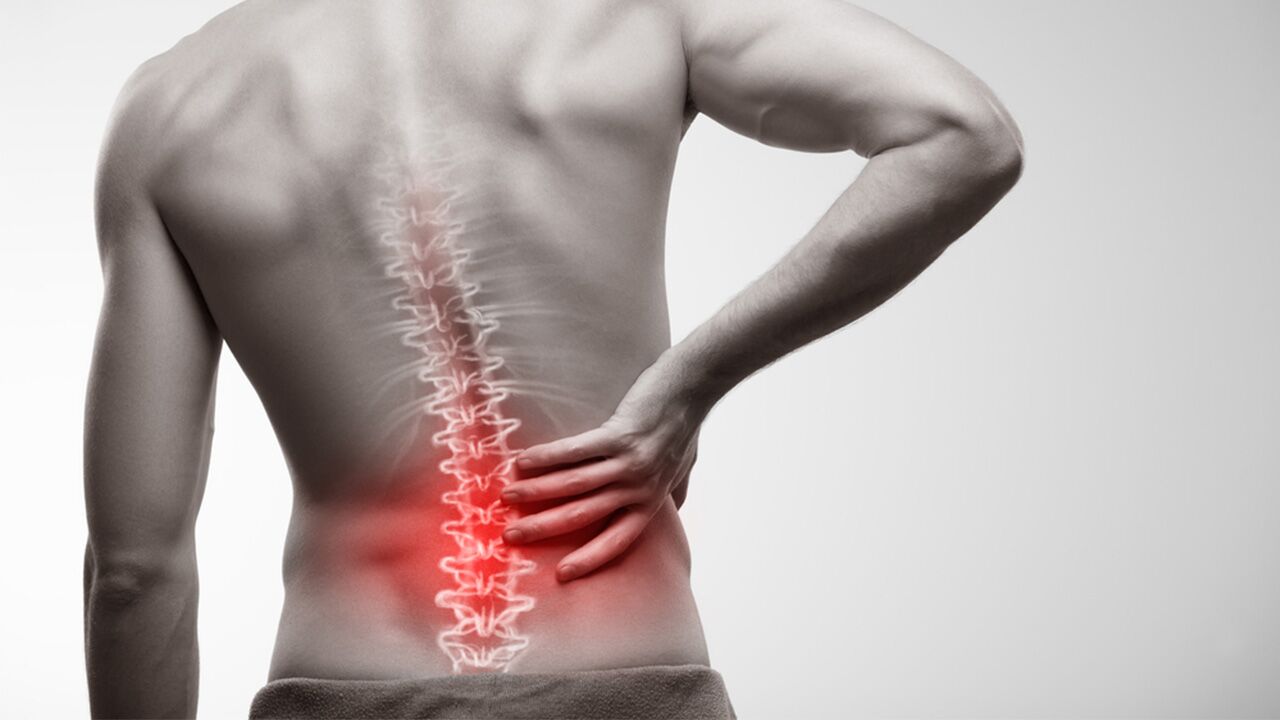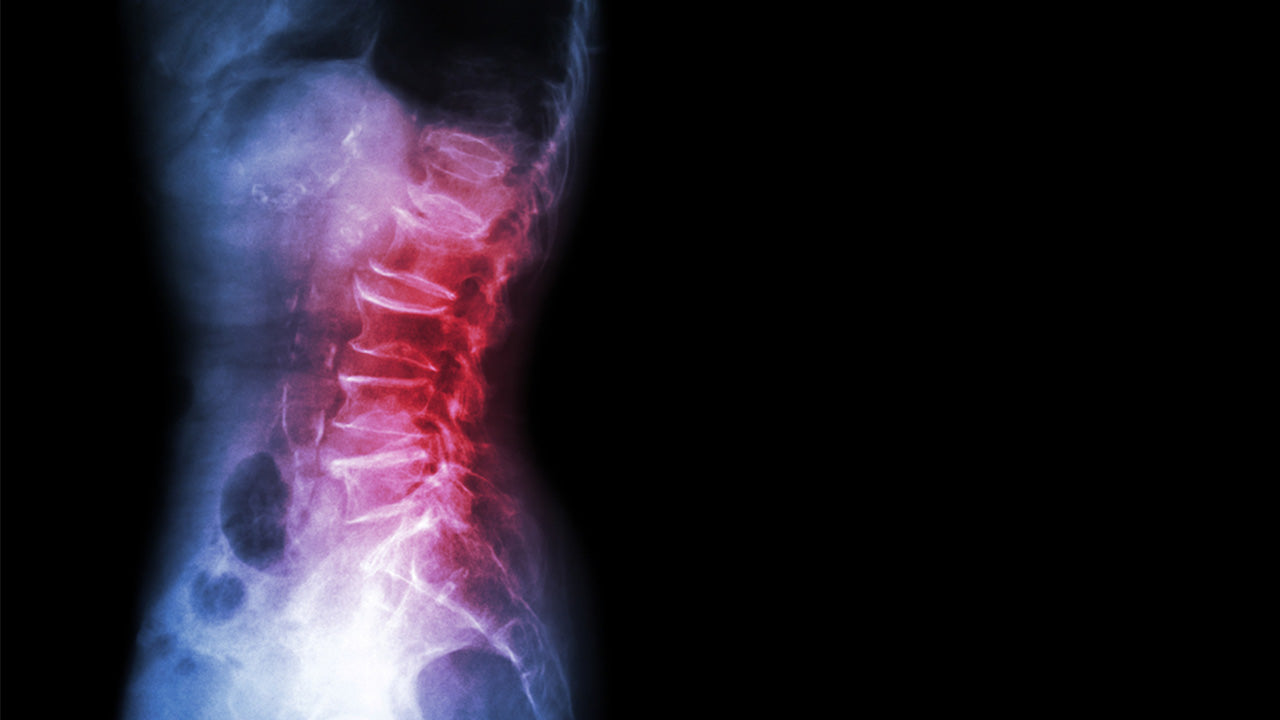Bone and Joint Pain: Causes and Relief
 By: by Amino Science
By: by Amino Science

If you’re alive, chances are you’ll experience bone or joint pain (or both) at some point in your life. And what lies behind that pain can range from something as benign as a bone bruise or sprain to serious disease. If you’re having pain and wondering where it’s coming from and what you can do about it, come with us as we explore some of the many causes of bone and joint pain and what you can do to find relief.
What Are Bones and Joints?
Before you can have a complete understanding of bone and joint pain, it’s first important to have a basic understanding of how these structures are made.
Bones are a type of connective tissue made up of the protein collagen and the mineral calcium phosphate. The combination of these substances results in a living tissue that’s both flexible and strong and capable of standing up to a wide array of everyday stresses.
In addition, bone is covered with a hard outer layer called compact bone, which contains channels that carry blood vessels and nerves. The inner layer of bone is what’s known as cancellous bone, which is composed of a spongy network of tissue called trabeculae. Between these trabeculae lies the bone marrow, where most of the body’s blood cells are made.
And where our bones meet, of course, are the joints, which are classified based on their range of motion and include three main types.
- Fibrous: These are the immovable joints that are held together with ligaments. These joints include the sutures in the skull and the joints holding the teeth in the jaw.
- Cartilaginous: Considered partially movable, these joints are connected to one another with cartilage. Examples of these joints are the vertebrae in the spine.
- Synovial: These are the freely movable joints we’re most familiar with and include the knees, hips, and shoulders. Synovial joints contain both cartilage and synovial fluid, which act to cushion and lubricate the joints.
Sometimes it’s difficult to tell whether pain is coming from a bone, joint, or nearby soft tissue, such as a ligament, tendon, or muscle. However, bone pain is usually felt as a deep, penetrating, or dull pain, while joint pain may be accompanied by loss of range of motion as well as swelling, warmth, or tenderness. Because the causes of joint pain may be quite different from those of bone pain, let’s take a look at each of them separately.
Bone Pain Causes and Symptoms
When it comes to bones, anything that affects mineralization or remodeling—the process whereby mature bone is replaced with new bone tissue—or results in injury or disease may cause pain. However, the most common examples include:
- Fractures: One of the most common causes of bone pain is bone fracture. Whether the result of trauma, bone weakening (as from osteoporosis), or repetitive stress, a bone fracture results in a breaking of all the trabeculae in that region. Symptoms of a bone fracture include sharp pain that worsens with movement or pressure, swelling, and deformity.
- Bruises: Another common cause of bone pain is a bone bruise, an issue that occurs after a traumatic injury or as a result of medical conditions in which bone surfaces grind against one another due to lack of cartilage. Symptoms of a bone bruise may include pain, tenderness, swelling, and bruising.
- Infections: When a bone infection occurs, it’s known as osteomyelitis. Whether caused by an infection that moves through the bloodstream, spreads from nearby tissue, or begins in the bone itself after an injury, symptoms of osteomyelitis may include dull pain, fever, swelling, warmth, redness, and tenderness.
Other less common causes of bone pain include:
- Bone cancer: Whether primary, like osteosarcoma, or metastatic from something like breast cancer, bone cancer increases the possibility of fracture and is often felt as a deep, aching pain.
- Paget disease: With this condition, the remodeling process of bone is affected, causing excess bone that may be brittle or deformed. Symptoms of Paget disease depend on the part of the body affected but may include pain or fracture.
- Osteomalacia: This condition leads to a softening of the bones, typically as a result of vitamin D or calcium deficiency. Symptoms associated with osteomalacia include dull, aching pain and weakness.
- Osteoporosis: Unlike osteomalacia, osteoporosis leads to weak and brittle bones when old bone is removed faster than new bone is created. Osteoporosis may cause no symptoms at all until a bone is fractured.
- Osteonecrosis: Also called avascular necrosis, osteonecrosis occurs when the blood supply is cut off to part of a bone, causing the bone to die and eventually collapse. Symptoms associated with osteonecrosis can be mild or severe, depending on the extent of disease and affected region.
Joint Pain Causes and Symptoms
There are literally dozens of causes of joint pain, including some that overlap with those of bone pain, like osteonecrosis and osteomyelitis. However, the most common causes (and symptoms) are:
- Arthritis: The most common cause of joint pain is arthritis. While there are over 100 specific types of arthritis, the two most common are osteoarthritis and rheumatoid arthritis, with osteoarthritis affecting over 30 million adults in the United States alone. This wear-and-tear condition most commonly involves the cartilage of the hands, lower back, and neck as well as the weight-bearing joints, such as the knees, hips, and feet. By contrast, rheumatoid arthritis is an autoimmune disease that affects about 1.5 million Americans. This condition can cause pain, tenderness, swelling, and eventual deformity due to destruction of both cartilage and bone within the joint. A third common type of arthritis is gout, which is caused by the accumulation of uric acid in the joint—most commonly the big toe. Symptoms may be severe and include pain, burning, swelling, and tenderness.
- Bursitis: This condition is a result of inflammation of the fluid-filled sacs called bursae that cushion the bones, tendons, and muscles near the joints. Bursitis typically affects the joints that perform repetitive movements and can cause aching, stiffness, redness, and swelling.
- Injury: Traumatic injuries, including broken bones and sprains, can lead to pain, tenderness, and swelling of the affected joint.
- Tendinitis: This condition involves inflammation or irritation of the tendons, especially those around the shoulders, elbows, wrists, knees, and heels. Symptoms of tendinitis can include swelling, tenderness, and dull, aching pain.

Diagnosing Bone and Joint Pain
Although there are many causes and symptoms of bone and joint pain, your health care provider can help determine the correct diagnosis by speaking with you about your symptoms and medical history and performing a physical exam and certain tests. Depending on your symptoms, history, and exam findings, tests that may be required include:
- Computed tomography (CT) scan
- Magnetic resonance imaging (MRI)
- Ultrasound
- Bone scan
- X-ray
- Joint aspiration
- Blood tests
Bone and Joint Pain Relief
Once you’ve received a diagnosis, treatment will depend on the cause of the condition. While severe injuries such as fractures and diseases such as osteomyelitis and cancer will require advanced treatment, most cases of bone and joint pain can be treated with conservative therapy.
For example, if you’re found to have a simple strain or sprain, health care professionals may begin by recommending rest and over-the-counter pain medications, such as acetaminophen and nonsteroidal anti-inflammatory drugs (NSAIDs). In addition, hot and cold packs and Epsom salts may be helpful in providing relief for acute injuries.
The magnesium sulfate in Epsom salts can be useful as a compress, soaking solution, or bath for minor sprains, bruises, aches, and joint stiffness. Likewise, the use of heat to increase blood flow, soothe stiff joints, relax muscles, and reduce muscle pain and spasms or cold to numb pain and reduce swelling may be helpful as well. Heat and cold can also be alternated—ending with cold—depending on preference.
Once the acute injury has healed, weight loss to take added strain off bones and joints or physical therapy and exercises designed to strengthen muscles in the affected area may also be recommended. Regular exercise, such as swimming, water aerobics, and yoga, has been proven to help reduce pain by improving circulation and increasing flexibility and levels of endorphins—the body’s natural painkillers.
Diet
More and more studies are proving that an anti-inflammatory diet rich in fruits, vegetables, whole grains, fish, and healthy oils, with the omega-3 fatty acids, fiber, and antioxidants they provide, can reduce symptoms of pain and inflammation. However, certain dietary supplements are also being recognized as potentially helpful in the fight against inflammation. These include:
- Glucosamine and chondroitin: While there’s been conflicting evidence regarding the efficacy of glucosamine and chondroitin in treating joint pain, one large study showed that the combination provided statistically significant pain relief compared with placebo in people with moderate to severe pain.
- Hyaluronic acid: One study found that a combination of hyaluronic acid and quadriceps strengthening exercises was effective in treating knee pain, while another found that hyaluronic acid may be an effective therapy for osteoarthritis based on its anti-inflammatory properties and ability to help lubricate joints and prevent joint space narrowing.
- Ginger and turmeric: Both ginger and turmeric have anti-inflammatory properties that can help reduce joint inflammation and pain. In fact, one study showed that ginger was effective in reducing knee pain from osteoarthritis, while another found that turmeric was effective in reducing the inflammation of arthritis.
- Calcium and vitamin D: Both calcium and vitamin D are essential for strong bones and can help prevent and treat osteomalacia and osteoporosis. You can find calcium in cheese, sardines, and oranges and get vitamin D by eating fatty fish and egg yolks and exposing unprotected skin to sunlight.
- Amino acids: These building blocks of protein are essential for life and healthy bones and joints. In fact, the most abundant protein in our bodies is the collagen that makes up a large part of both bones and joints. In addition, several studies have shown that phenylalanine may be effective in reducing lower back pain and potentially chronic pain as well. Because amino acids work best when used together, we recommend a balanced supplement that addresses the specific issue you wish to tackle.
By following the medical advice of your health care provider as well as certain dietary and lifestyle changes, most bone and joint pain can be reduced or even eliminated. But if conservative treatment hasn’t worked for you or you have symptoms that are severe or worrisome, don’t hesitate to speak with your doctor about additional treatment options.

Up to 25% off Amino
Shop NowTAGS: conditions natural cures
Join the Community
Comments (0)
Most Craveable Recipes




 833-264-6620
833-264-6620



















